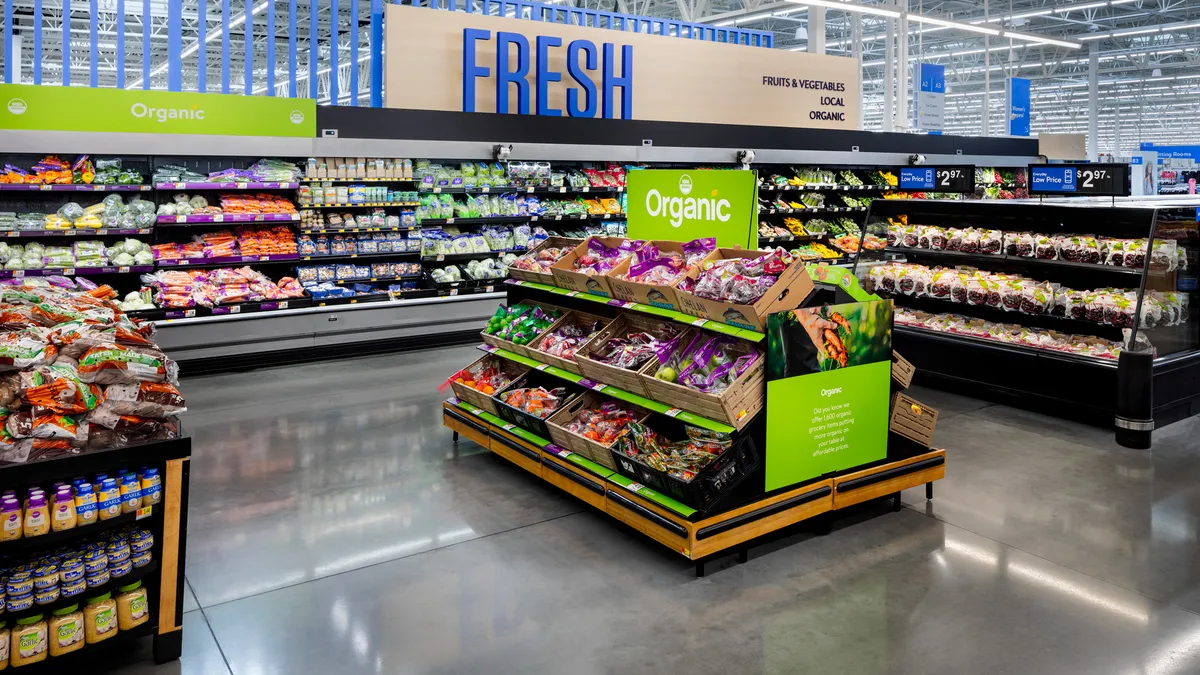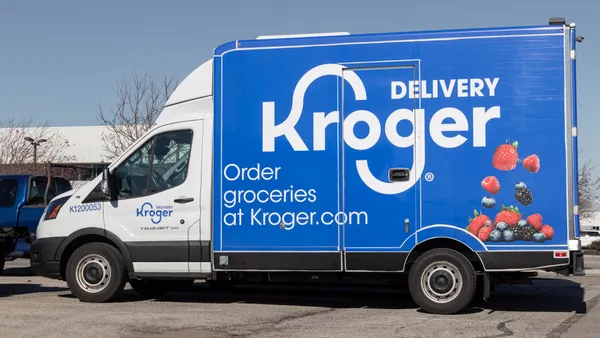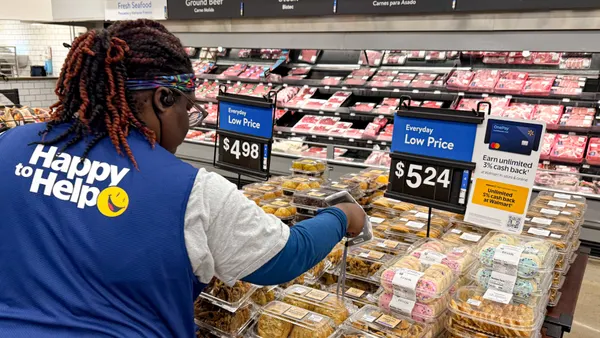Dive Brief:
- Walmart posted a better-than-expected performance for the second quarter, with companywide revenue and earnings beating analyst estimates.
- Market share gains in food categories, “strong” private label sales and higher-than-average tickets drove the retailer’s U.S. comp sales increase of 6.5%, per an earnings presentation. Its U.S. grocery sales increased in the high-teens on a two-year stack.
- For its U.S. business, net sales rose by 7.1%, to $105.1 billion, while operating income fell 6.7%. Executives attributed lower operating profits and margins on markdowns and a higher share of grocery products in the retailer’s sales mix.
Dive Insight:
Given its scale, and how many categories and demographics the retailer crosses, Walmart has a window into the consumer and economy that few other retailers do. As with the retail market as a whole, the story of inflation at Walmart has been multilayered.
For one, as CEO Doug McMillon acknowledged on a call Tuesday with analysts, inflation has increased the retailer’s sales. In Walmart’s U.S. business, average ticket size was up 5.5%, driving the lion’s share of the retailer’s comp sales growth — though, notably, transactions did also grow by 1%.
Inflation has also driven more middle and higher income shoppers to Walmart and its low-price proposition. At the same time, higher prices across the economy have, as is well known now, shifted what consumers are buying. That has created both opportunities and pain for Walmart.
Being a major food and consumables retailer, Walmart has been capturing market share in those categories, McMillon said on the call. Comp sales in food went through growth rates in the mid-teens in Q2.
Walmart, while raising prices, has an opportunity to win over customers by keeping certain prices lower than competitors in food, including on its private label items. The retailer’s private brand penetration is increasing, with the growth rate in food categories doubling in Q2 compared to Q1, Chief Financial Officer John David Rainey said on the earnings call.
But food inflation generally, across the economy, has caused consumers to pull back spending on other areas, which has hit Walmart’s bottom line in multiple ways. For example, shoppers have shifted from deli meats at higher price points to buying more hot dogs, as well as canned tuna or chicken, Rainey said.
For one, the rise in food and consumable sales at Walmart has shifted its overall sales mix to those lower margin goods. Pullbacks in consumers in areas like apparel and some hardlines, has led to markdowns so Walmart could clear out excess inventory — further dinging profits.
As Walmart continues its push into omnichannel offerings, executives noted the variety of options the retailer can serve customers is a benefit amid ongoing shifts in consumer behavior. E-commerce sales growth in the U.S. improved sequentially, up 12% year over year in Q2 and 18% on a two-year stack, Rainey said.
McMillon said the retailer expects to have about 5,000 pickup locations by the end of the year — nearly double the number of pickup locations it had at the start of the pandemic. GoLocal, the white-label delivery service that was announced last summer, has surpassed 1 million deliveries, he noted.
“The team is also working on getting items to customers faster while lowering the cost of delivery through a significant increase in the number of orders fulfilled by stores,” McMillon said. “We've increased this volume by nearly 40% from a year ago.”
On the whole, Q2 came in ahead of Walmart’s revised and tempered guidance for the period. Rainey said that customer traffic improved in July, which could be driven by lower gas prices and the back-to-school season. It’s one sign of hope that the market disruptions of the past quarter could be working themselves out.
With traffic and sales improving, management held its guidance for the fiscal year, projecting comp growth of 4% in the U.S












